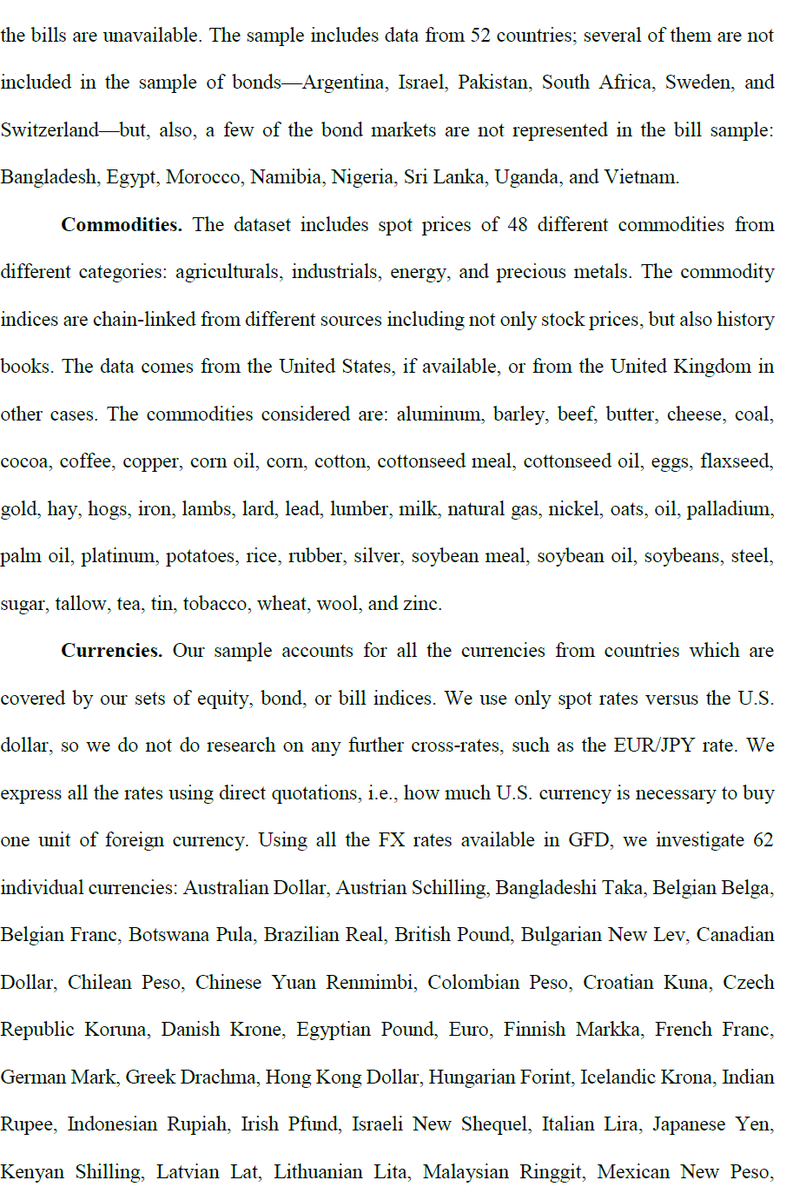
1/ To Trade or Not to Trade? Informed Trading With Short-Term Signals for Long-Term Investors (Israelov, Katz)
"Strategic trade modification [timing] provides exposure to short-term signals without imposing additional transaction costs/capacity limits."
aqr.com/Insights/Resea…
"Strategic trade modification [timing] provides exposure to short-term signals without imposing additional transaction costs/capacity limits."
aqr.com/Insights/Resea…

2/ Assets: Equity indices
Long-term signals: value + momentum
Short-term signal: one-week ST reversal
The "mixed portfolio" weights LT and ST signals for max Sharpe net of trading costs (ex post).
"Informed trading" follows through with a trade only if LT and ST signals agree.

Long-term signals: value + momentum
Short-term signal: one-week ST reversal
The "mixed portfolio" weights LT and ST signals for max Sharpe net of trading costs (ex post).
"Informed trading" follows through with a trade only if LT and ST signals agree.


3/ "Trading aggressiveness is the % difference between the current position and the desired position that is actually traded.
"Rebalancing daily is approximately 5x more aggressive than rebalancing weekly.
"Informed trading increases gross performance & reduces trading costs."

"Rebalancing daily is approximately 5x more aggressive than rebalancing weekly.
"Informed trading increases gross performance & reduces trading costs."


4/ "The informed-trading algorithm provides better net performance than the two alternatives. It achieves this improved performance by increasing the exposure to the long-term signal while strategically picking how and when to introduce the exposure to the short-term signal." 

5/ For simulated, normally distributed returns, "the informed-trading portfolio provides the highest gross and net performance of the three alternative portfolios, both when trading completely to the newly desired positions and when rebalancing optimally." 



6/ "Because of trade cancellation, the informed-trading algorithm trades twice as aggressively as the optimally mixed portfolio. In so doing, the informed-trading portfolio achieves a higher exposure to both the LT portfolio and the ST portfolio while paying lower trading costs." 



7/ "Trading aggressiveness is selected to maximize the
net Sharpe ratio for each mixture weight.
"For any given long-term exposure, the informed-trading algorithm provides a greater exposure to the short-term signal than that provided by trading a mixed portfolio."
net Sharpe ratio for each mixture weight.
"For any given long-term exposure, the informed-trading algorithm provides a greater exposure to the short-term signal than that provided by trading a mixed portfolio."

8/ "The points plotted are for mixture weights ranging from 0.7 to 1.0 in increments of 0.0025. Aggressiveness is selected to maximize net Sharpe ratios.
"Informed trading provides exposure to the ST signal more cheaply than does traditionally trading the mixed portfolio."
"Informed trading provides exposure to the ST signal more cheaply than does traditionally trading the mixed portfolio."

9/ "As trading costs rise, the informed-trading portfolio will choose a mixture weight approaching 1 on the LT portfolio [no weight to the ST signal]. However, it continues to benefit from its cancellation of undesirable trades (from the perspective of the ST signal)." 

10/ "The 0.75 LT simulated Sharpe may be obtained by mixing 10 orthogonal signals, each with a 0.24 Sharpe. A 5% improvement would require an 11th signal.
"We are not confident finding that signal is easier than for a ST signal that does not need to pay for its trading costs."
"We are not confident finding that signal is easier than for a ST signal that does not need to pay for its trading costs."
• • •
Missing some Tweet in this thread? You can try to
force a refresh
















